INTRODUCTION
Faced with two main phenomena governing most societies across the globe, one of increasing automation and the other of ecological catastrophe questions arise about how to (Frase, Peter. “Four Futures: Life After Capitalism”, Maple Press, 2016, 8) make sure everyone benefits from the fruits of new technologies and how to make sure all of us can survive the ecological crises together in an egalitarian way. Possible futures on how to deal with these issues will require a different kind of economic system than the one that has become dominant by the late twentieth century. The main crisis of today is what can be described as capitalist realism, the current global political situation which lacks the ability to imagine viable alternatives to the capitalist system and in which political considerations operate solely within the confines of the capitalist framework . (Fischer, Mark. “Capitalist Realism: Is There No Alternative?”, O Books, 2009, 2)
Building on the approach set by Peter Frase in his book Four Futures: Life After Capitalism, in which he uses the tools of social science in combination with those of speculative fiction to explore possible future political scenarios beyond capitalism, the research seeks to understand a possible way architecture can respond to increasing automation and the ecological catastrophe.
The starting point of the research is a scenario where increasing automation has led to the decommodification of work through the institution of an UBI, allowing for finding new meaning in a life that is not centered around waged work. Getting past wage labor will require changes in priorities and the values our lives revolve around. (Frase, “Four Futures: Life After Capitalism”, 33) Freed from the need to work for wages, it will be possible to explore what it means to take care of ourselves and one another and as a consequence certain activity will become the result of voluntary cooperation. (Frase, “Four Futures: Life After Capitalism”, 41). To avoid portraying a utopia, the constraints of scarcity and the ecological devastation are also characteristics that set the framework of the scenario, raising the question of how to work out a new relationship between people and their environment. The scenario being presented in this research paper will now be referred to as “the entangled future”.
To develop a deeper understanding of the entangled future, the paper focuses on how architecture can operate through a mutual cooperation of technologies and the multi-species user network. The research is pursuing how the integration of non-human agents to the design process, in particular animality, can allow new ways of understanding and producing self-built collective space.
Throughout time, architects and non-architects, influenced by social, political and technological events, have designed self-built environments, as highly innovative searches for means to express new ways of thinking and living, but historically linked to humans as the sole user of the habitat.
ENTANGLED FUTURE

Since the past self-built dwellings have been design and understood as the integration of intangible cultures (Rudofsky, Bernard. “Architecture Without Architects”, University of New Mexico Press, 1987) i.e. human to the landscape. Yona Friedaman’s Ville Spatiale offered a radical vision in which the metropolis grows and change adapting to the necessities of the people and more recently Block’hood by Jose Sanchez proposed a self-built city simulator video game which starts to incorporate ecology and other species to the building structures the players build, but still operating inside out of a catalog of predispose human-center blocks.
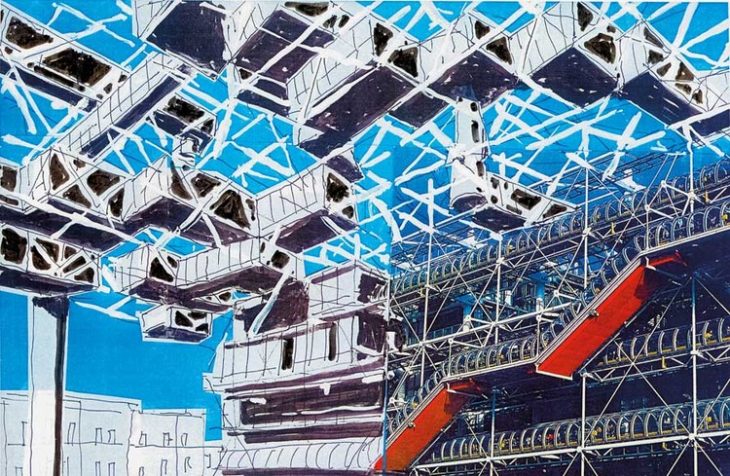
Yona Friedman, “La Ville Spatiale”, 1959
The result of this attitude is such that any species is seen as a potential use to humans, following both the judeo-christian tradition and the philosophy of Aristotle who stated that everything nature has created serves for the purpose of man (Szydlowska, Agata & Rosinska, Monica.“Zoepolis: Non-anthropocentric design as an experiment in multi-species care”, 2019, 1). New meanings of user have been discussed to overcome our anthropocenic behaviour, Benjamin Bratton in The Stack, describes the user as a “variety of possible human and non-human agencies” ( Bratton, Benjamin. “The Stack: On Software and Sovereignty”, The MIT Press, 2016, 251) , Donna Haraway in When Species Meet, defines the relationship between human-technology-animal as “Tangled Species”.
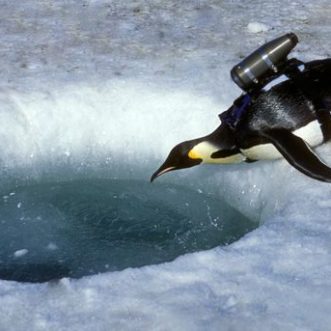
National Geographic, “Crittercam Education”, 2011
Using the example of National Geographic’s Crittercams, and taking Don Idhe phrase “Insofar as I use or employ a technology, I am used by and employed by that technology as well” (Ihde, Don. “Bodies in Technology”, University of Minnesota Press, 2001, 137) to redefine it as “Insofar as I (and my machines) use an animal, I am used by an animal (with its attached machine)” (Haraway, Dana. “When Species Meet”, University of Minnesota Press, 2008, 262), reinterpreting the complexity of the user in the broad spectrum, in which humans, animals and machines occupy an equal part, coexisting in a non-ranking or fixed importance sistematizacion, first freeing ourselves of our own settled existence, and secondly reorienting the definition of design in a post-human era.
Moving away from the past, in which spaces are designed as spectacle for other species, for them, not with them, into a multi-species architecture that could suggest how to abandon historicisms and develop new imaginariums for the future. The historical trajectory reveals architectural operating logics in two parallel ways.If the logics are entangled, it is possible to understand how architecture is operating nowadays in the integration of non-human species at the same time it works towards a collective built environment.
Deep Green, Guatemala City, is a project under development by ecologicStudio in which, besides not working towards a self-built environment, their challenge is to change the system of how the city operates, thus, preparing it for an unpredictable growth. For this particular case the aim is to integrate wild animals in the regeneration process , for a “re-wilding plan” at the same time they incorporate urban agriculture for local and/or self-supplying systems.
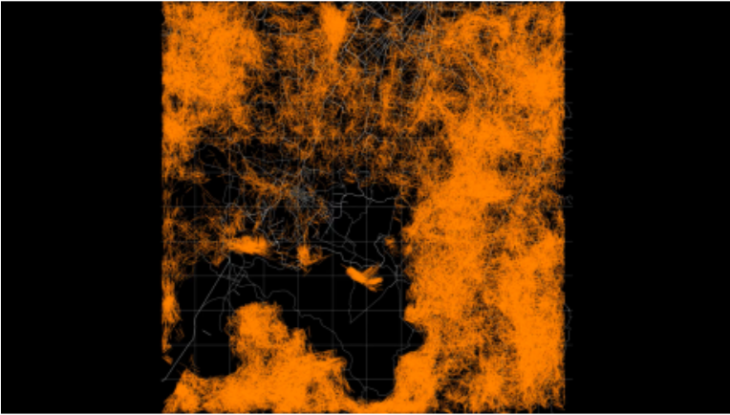
EcologicStudio, “Wild animals paths in Guatemala City”, 2017-21
On the other hand, and according to a decommodified scenario, it is appropriate to understand how the integration of robotics species could operate. Recent research called Co-Designing Materia?-Robot Construction Behaviors, shows a “robotic construction system in which robots are taught construction behaviors relative to the elastic bending of natural building materials”. In other words, how can robots build and grow infrastructure in an unpredictable environment.
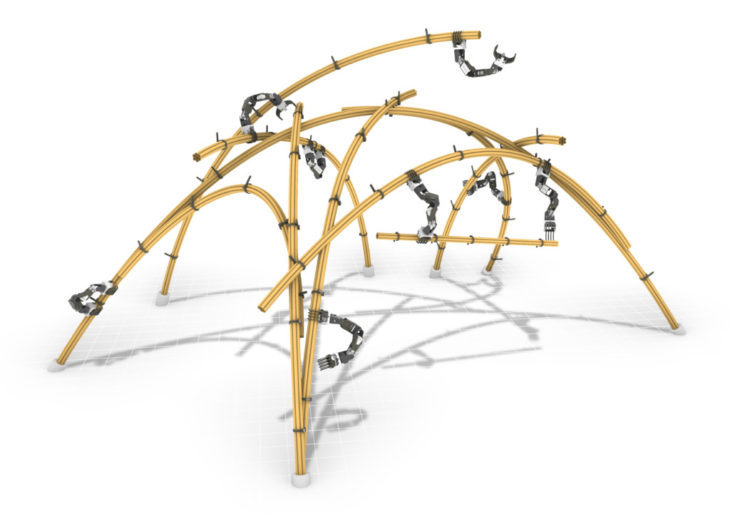
Grzegorz ?ochnicki, Nicolas Kubail Kalousdian, Samuel Leder, Mathias Maierhofer, Dylan Wood and Achim Menges, “Co-Designing Materia?-Robot Construction Behaviors”, 2021
It is also important to understand the species in order to design with species rather than for species. This is the case of A living house made of mycelium, a project developed by Bob Hendrikx in 2019 at TU Delft in which he propose a system where urban growth is developed under the logic of mycelium growth, and as he say ”most of these other projects, the root system is killed, which means the growth also stops”, and in this case he understands the operating logics of fungi and apply it to his project as a living system of urban growth.
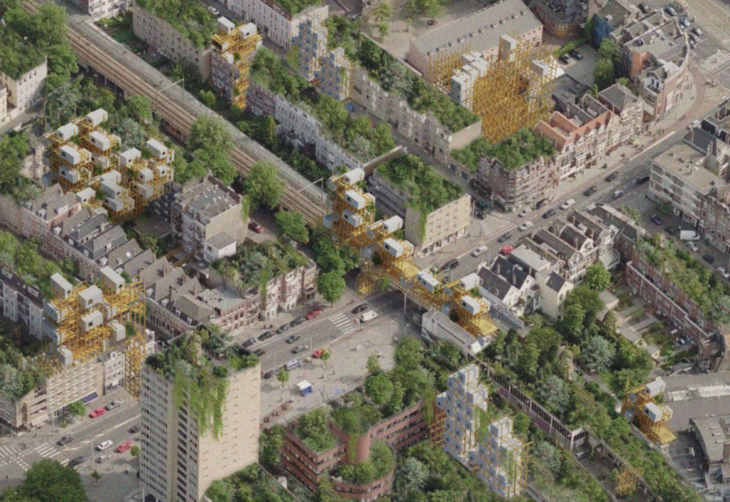
A living house made of Mycelium – Bob Hendrikx, 2019
One of the predominant figures that works in the field of multi species collectively build environments is Neri Oxman and with her project of The Silk Pavilion I she addresses the need of developing a way of collaborating with another species, in particular the silkworm.
In the project of the Silk Pavilion I she brings together a primary structure of silk threads laid down by a CNC machine and a secondary structure of silk laid down by silkworms. As Yona Friedman in the 60’s proposed a collective design for humans, Neri Oxman, with the Silk Pavilion I, changed this perspective integrating animality to the agents involved.
What is interesting is how the silk worm has been studied in order to understand its requirements and respect them within the creation of the pavilion, by motion tracking their movements in the creation of their cocoon to understanding their response to environmental stimuli like solar exposure and heat. Oxman integrates the silkworm in a way that changes the paradigm of ancient techniques of extracting the silk, which would consist in boiling the cocoons, while in the pavilion the silkworm is kept alive resulting in a living-design project.
What comes into play with this approach is the need to empathize with the other species and take care of it. This is an essential element in the scenario of the research since the decommodification of work leads to the need of finding a new source of meaning and purpose and that could be through the care of our own build environment. The result is also the creation of structures that address the ecological crisis by creating a materiality for the built environment without depleting natural resources.
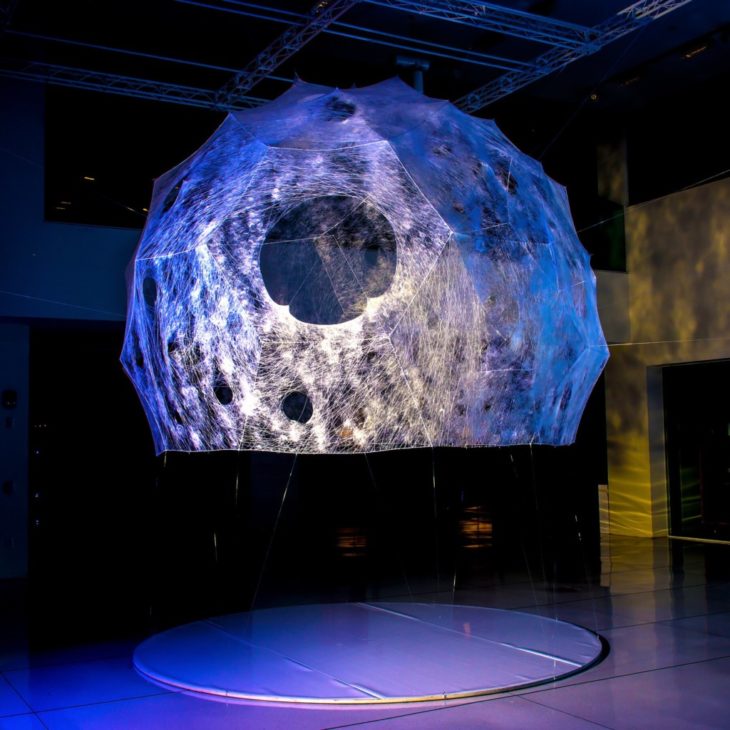
Neri Oxman,, “Silk PAvilion I”, 2013
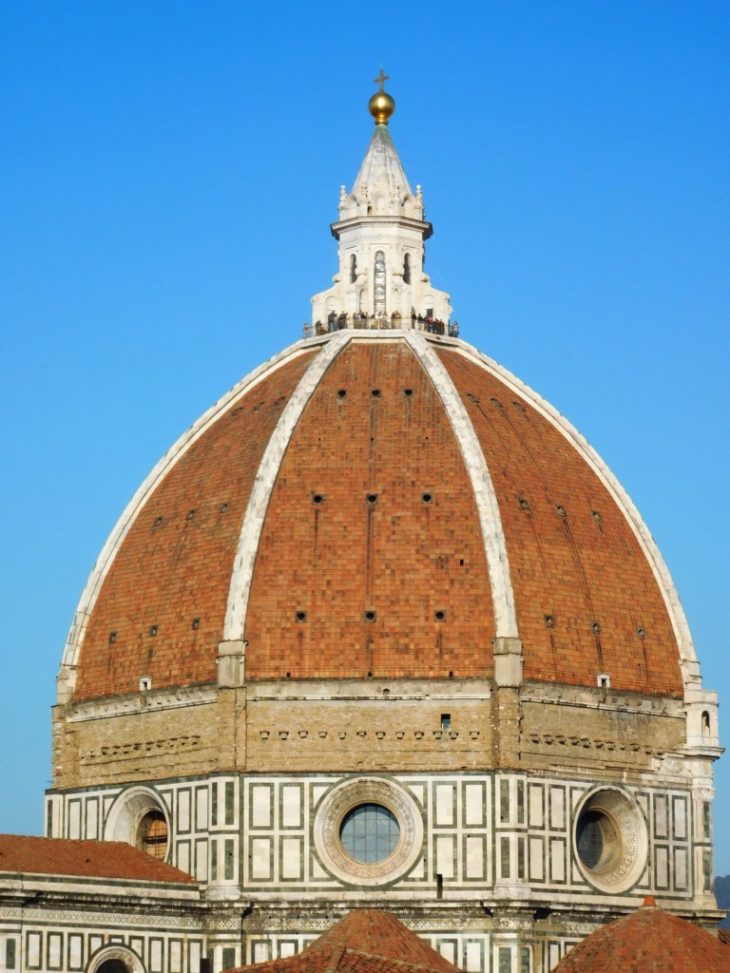
Filippo Brunelleschi, Dome of Santa Maria del Fiore, 1436
The Silk Pavilion I represents therefore an example of how architecture could operate in the Entangled Future, nevertheless there is still the presence of a preconditioned imaginarium of the shape that the final design needs to receive. Even though during the process other agents beyond the human were involved, aiming to decenter the human in the design process of the production of spaces of cohabitation, the formal result still evokes there is a centrality and hierarchy by producing this dome-like structure.
For a design to be operating within an actual collective multispecies design approach all parties should have the same agency and the result should become a new form of inhabiting space. This can only be achieved by not controlling the final outcome and allowing autonomy to all species to operate within their own logic.
REFERENCES
– Frase, Peter. “Four Futures: Life After Capitalism”, Maple Press, 2016 – Fisher, Mark. “Capitalist Realism: Is There No Alternative?”, O Books, 2009, +
– Rudofsky, Bernard. “Architecture Without Architects”, University of New Mexico Press, 1987
– Szydlowska, Agata & Rosinska, Monica.“Zoepolis: Non-anthropocentric design as an experiment in multi-species care”, 2019
– Bratton, Benjamin. “The Stack: On Software and Sovereignty”, The MIT Press, 2016 – Ihde, Don. “Bodies in Technology”, University of Minnesota Press, 2001 – Haraway, Dana. “When Species Meet”, University of Minnesota Press, 2008
– Pasquero, and Polleto, Marco. “PhotoSynthetica: Deep Green”, 2017-2021,
https://www.photosynthetica.co.uk/deepgreen
– Grzegorz ?ochnicki, Nicolas Kubail Kalousdian, Samuel Leder, Mathias Maierhofer, Dylan Wood and Achim Menges, “Co-Designing Materia?-Robot Construction Behaviors”, 2021
– Friedman, Yona. “Paris Spatiale”, 1959,
http://www.yonafriedman.nl/?page_id=431
– “Crittercam Education”. National Geographic Society, 2011,
https://www.nationalgeographic.org/education/crittercam-education/
ENTANGLED FUTURE – Collective Multispecies Design in a Post-human Era is a project of IAAC, the Institute for Advanced Architecture of Catalonia, developed during the Master in Advanced Architecture (MAA01) 2021/22 by students: Gianmarco Paglierani, Gizem Demirk?ran, Martín Gómez, Mira Housen, Oscar Cortes and Perniyal Waseem | Faculty: Manuel Gausa and Jordi Vivaldi.
